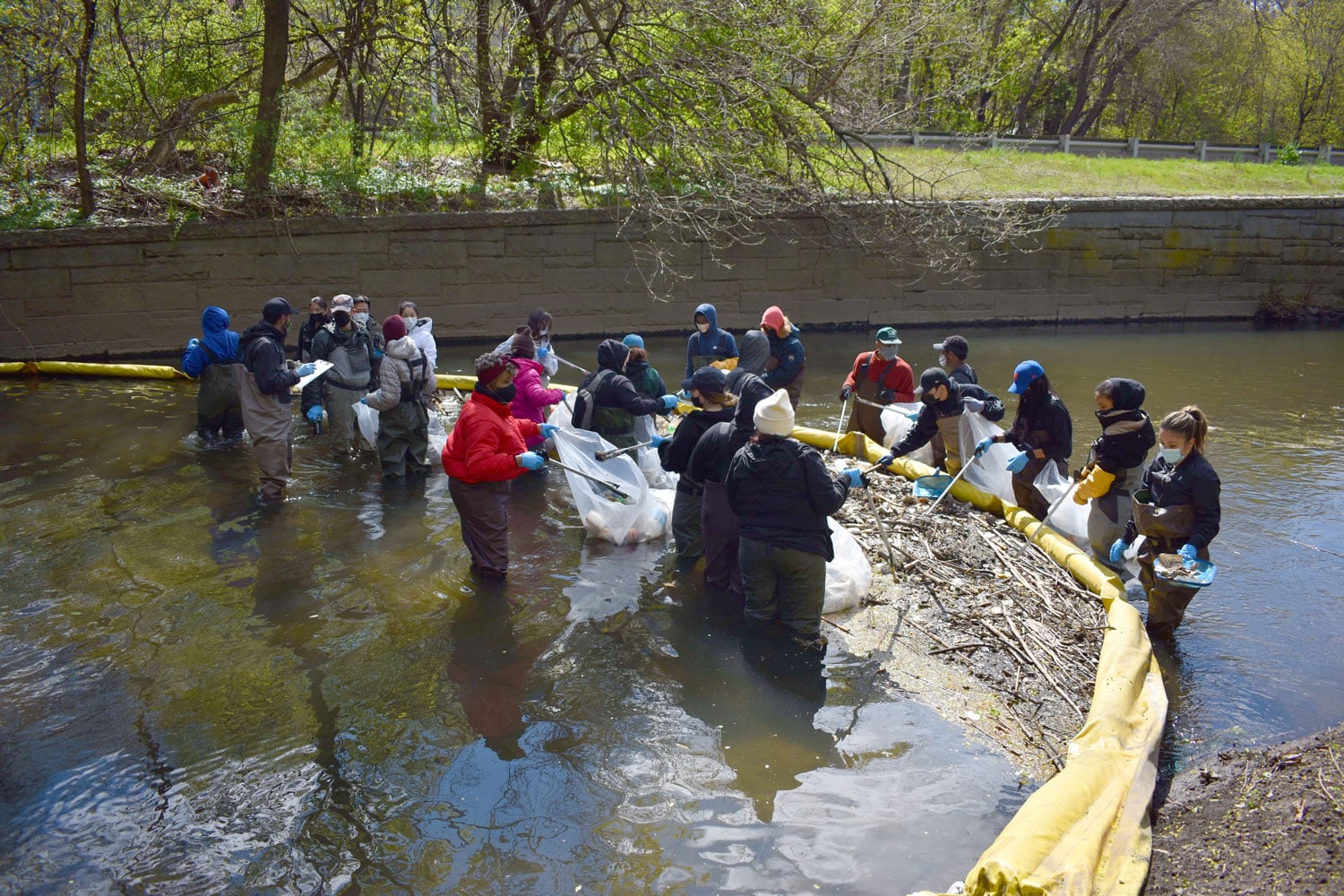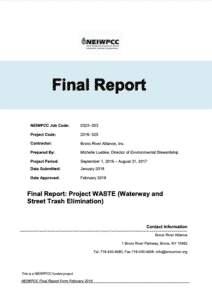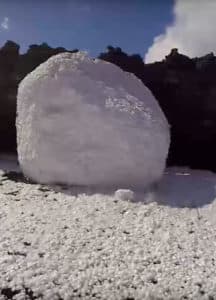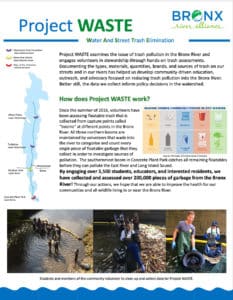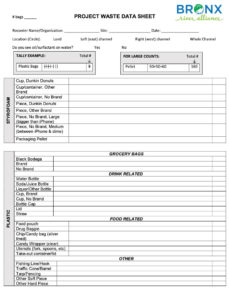Overview
Project WASTE (Waterway And Street Trash Elimination) addresses floatable trash, using volunteer support to remove and tally individual trash items and record data to be analyzed over time. The information we collect helps determine the sources of trash across the watershed, the efficacy of local legislation addressing trash pollution reduction, and strategies for trash reduction that could be implemented. The project engages community volunteers by promoting outreach to businesses whose products end up in and along the river, especially uniting messaging around the harm to our waterways caused by non-biodegradable products.
Communication from Westchester County informed us that storm drain catch basins across the Bronx River watershed often lack adequate catchment screens to prevent litter from entering the Bronx River with stormwater. This is supported by the fact that the majority of documented trash is lightweight, buoyant material like Styrofoam and single-use plastics.
Project WASTE events are held at Muskrat Cove, which acts as the border between Westchester and the Bronx for the Bronx River.
To date, we have removed over 200,000 items weighing over 7 tons from in and around the river!
Resources & Documents
Photo Gallery
Highlights
Microplastic Initiative
We have successfully completed our microplastics pilot study! Microplastics (microscopic plastics) come from many different sources, including health products, clothing, and plastic litter and waste. These particles are polluting the world’s rivers and oceans in ways we are just beginning to understand. Together with our colleagues at Rocking the Boat, we have designed a method to collect, process, and analyze samples of water from the Bronx River for microplastics.
2023 Project WASTE Results
In total, 14,710 items were removed from the Bronx River in 2023, 5,404 of those items were from Project WASTE events. The total amount of Styrofoam pieces removed was 5,066 with 4,029 removed by us. We have found that Styrofoam waste dominates trash in the upper river, while it is found in much lower quantities in the lower river. In its absence, plastic waste dominates the lower river. This finding is supported by the total number of plastic items removed in 2023: 6,467 where only 975 were from our events. Focused efforts in Westchester will need to be conducted to help identify the sources of this excessive Styrofoam pollution and how it can be prevented.
The number of cigarette butts and other drug-related items removed (583 total, 187 from events) was slightly lower than previous years, conversely items we have classified as “other”, toys and other recreational equipment, metal, glass etc., have increased (2,594 total, 313 from events). The number of metal items found (1,024 which is 39.5% of our “Other” category) have notably increased. While metal is not considered floatable trash, storms like Hurricane Ida can cause metal trash that might have been in the riverbed to be kicked up. With current projections showing an increase of storm intensity and frequency, we could expect to see more trash that is hidden in the riverbed.
Read more about Project WASTE on our flyer and our 2017 report to the EPA. To learn more about the effects of plastic on our ecosystems, this video is an excellent depiction of the scale of the issue, and this video dives (literally!) into microplastics. Find out more about microplastics and microbeads here!
Essential to protecting our waterways is the regular maintenance and proper functionality of city storm drains. Click here to watch a quick video from NYC DEP of how stormwater catch basins are kept clean and free of debris!
Get Involved
Interested in participating in our trash research and elimination program? Email Ecology@bronxriver.org to learn more!
Contact
You can also send us a message through the same email at Ecology@bronxriver.org.

